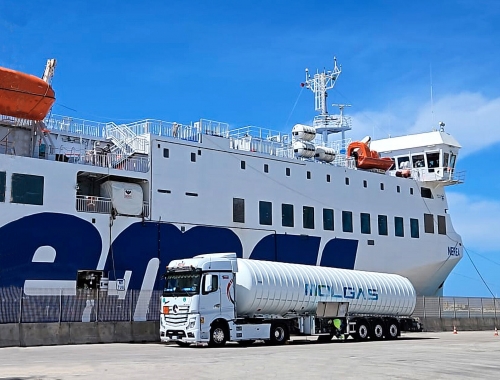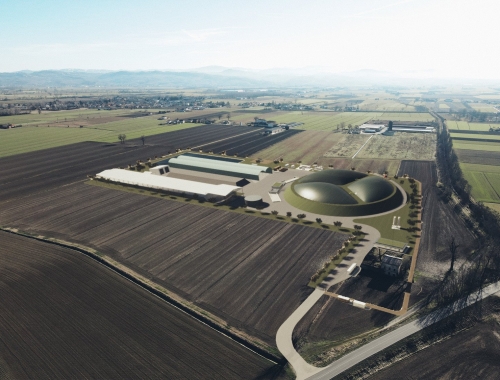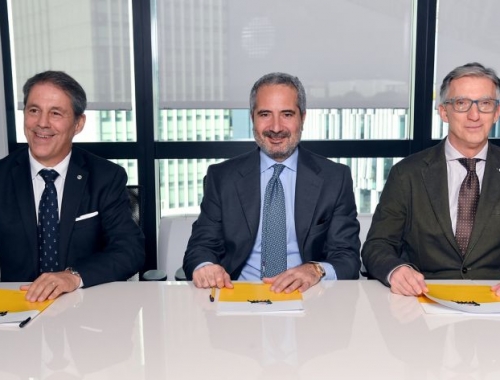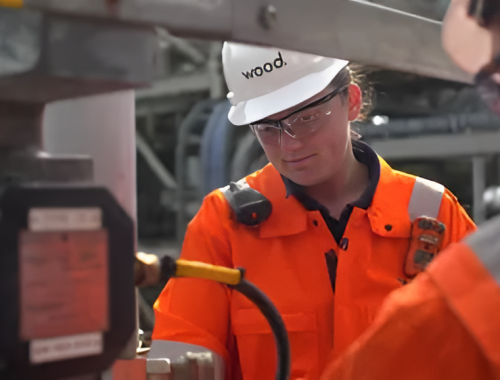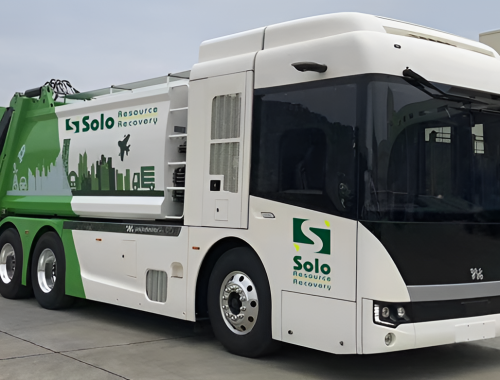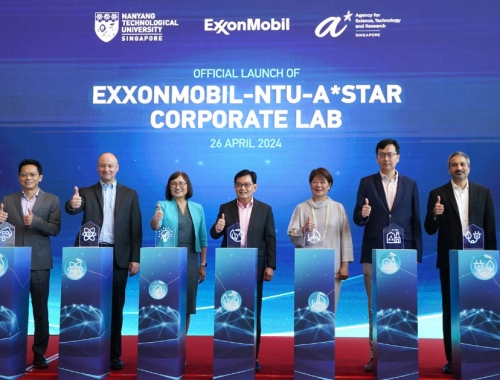“The most sustainable” solution for capturing CO2: Saipem Q&A
SUMMARY
Mauro Piasere, Chief Operating Officer of Robotics and Industrialised Solutions at Saipem, discusses with Gas Pathways the company’s Bluenzyme 200 technology – what it describes as “the most sustainable” solution for capturing CO2.
By Joseph MurphyPOSTED IN:
Carbon capture is primarily aimed at large industrial emitters, but Saipem’s BluenzymeTM 200 is targeted instead for small and medium emitters – which presents additional challenges. How does the product overcome these challenges to make it suitable for these scales?
Firstly, let’s make sure we understand that Bluenzyme™ is a line of products that can be applied to all sizes of emitters, as there is no inherent limitation in the technology in terms of the quantity of CO2 to be captured.
BluenzymeTM 200 is the first product fully industrialised and with its 200 tonnes per day of capturing size is designed to provide small and medium emitters with a solution to reduce their CO2 emissions filling a gap in the solutions currently available on the market.
Coming to the challenges, we’d like to think that they’re more opportunities to be harvested instead.
Starting from the capex, a modular and replicable solution has allowed Saipem to set up an industrial approach to the realisation of the product that has pushed down the costs of every single unit. Some customizations are always possible to adjust for local site conditions, but the main parts are all defined and supplied in pre-build truckable containers allowing the minimal disruption to the production site.
Regarding Opex costs, the possibility to use low temperature waste heat already present in the emitter’s process can cover most of the heat duty of Bluenzyme™ significantly reducing its operational costs. Thanks to the plant design and the inherent safe solvent used, Bluenzyme™ can be remote operated, by Saipem if required, thus reducing the number of resources needed at site for operations and maintenance.
Once the CO2 is captured, there are two options. For distributed small and medium emitters, the preferable solution is the immediate reutilization on site in the emitter process or in conversion facilities for valuable products, such as e-fuels. In our plant in Saint Felicien in Quebec we reuse the CO2 captured in a nearby greenhouse to increment agricultural production.
The second option requires a gathering and transportation infrastructure that could be shared among emitters to bring the CO2 to its final permanent storage. You can see this as a challenge or an opportunity to extend the decarbonisation effort to a whole district.

Mauro Piasere, Chief Operating Officer of Robotics and Industrialised Solutions at Saipem
Saipem describes BluenzymeTM as “the most sustainable” solution for capturing CO2 – can you illustrate that claim with more detail/figures? In particular, what advantages does the use of the carbonic anhydrase enzyme offer versus other methods?
The carbonic anhydrase enzyme-based technology offers several advantages vis-à-vis other methods. Unlike traditional methods that often involve toxic chemicals, BluenzymeTM relies on the natural enzyme carbonic anhydrase (CA). This enzyme is naturally present in living organisms and plays a vital role in CO2 exchange during respiration.
This means that adding Bluenzyme™ in an existing plant doesn’t increase the safety risks either during normal operations or even in case of incidents, reducing permitting processes and increasing social acceptance. The technology was tested in a small-capacity commercial plant paper mill in St. Félicien, Canada where the plant captures more than 90% of CO2 emissions from the flue gas and supplies the CO2 at food grade level to a nearby greenhouse confirming the effectiveness of the technology.
In addition to this, the enzyme, unlike other solvents, doesn’t require high temperature heat, and hot water is sufficient to regenerate the solvent. This lowers the specs for piping and equipment and makes it easier to recover waste heat from the emitter process thus reducing the energetic cost of the plant.
This means that CO2 can be captured efficiently, optimising energy consumption compared to other capture methods.
In addition, the modular standardised approach grants a more efficient and sustainable execution and the module’s fabrication occurs in a more controlled environment with higher productivity compared with a stick-built approach.
How novel is the use of this enzyme for carbon capture? In what ways has Saipem innovated the process?
The use of the carbonic anhydrase enzyme for carbon capture represents a groundbreaking innovation in CCUS practices. Saipem drew inspiration from nature, particularly the human body and other living organisms, where the enzyme carbonic anhydrase plays a crucial role in facilitating CO2 exchange during respiration. This natural process served as the foundation for developing an industrial version of this enzyme. Saipem's innovation lies in the industrial-scale development of a high-performance enzyme. This enzyme acts as a powerful catalyst, significantly accelerating the CO2 capture process by facilitating the reaction with carbonates while maintaining absorption at atmospheric pressure. This catalytic action enhances the efficiency of CO2 capture.
The use of a stable and non-toxic solvent based on potassium carbonates in BluenzymeTM is also a significant advancement. Saipem's technology ensures the stability of the solvent, even in oxidative conditions and in the presence of contaminants. This characteristic prevents the production of harmful degradation by-products, making it a cleaner and more environmentally friendly choice.
A collaboration agreement with a leading European enzyme producer has further strengthened the technology and has enabled Saipem to optimise the supply chain both in terms of assurance and competitiveness.
Finally, BluenzymeTM technology has been developed over the past two decades by Canadian scientists and engineers and supported by the Governments of Canada, the United States, and the European Union (EU). Indeed, CO2 Solutions by Saipem is featured in ACCSESS, a project funded by the EU under the Horizon 2020 programme. The project, launched in May 2021 and coordinated by the Norwegian research institute SINTEF Energy Research, aims to develop safe, flexible, replicable, and cost-effective CCUS pathways to move toward a climate-neutral Europe in 2050.
Can you comment on particular ways that the method is suitable for carbon capture in the natural gas industry value chain? At what stages of that value chain is carbon capture most applicable?
BluenzymeTM technology offers versatility and efficiency in multiple segments of the industry including those along the natural gas value chain. It can capture CO2 emissions from post combustion in a variety of concentrations and sizes although provide the best results in the range of 8% and above of CO2 content in the flue gas.
As such, although may not be recommended in the gas to power segment, it is a very good solution to decarbonised processes that require boilers.
Furthermore, Bluenzyme™ can be the solution to produce the, so called, blue products along the natural gas value chain such as blue ammonia, blue hydrogen or urea.
In what sectors of industry do you see the strongest application of this method? What about interest from potential future customers?
Saipem's CO2 capture technology, Bluenzyme™, is gaining significant interest across various industries due to its versatility and to the modular approach that we’ve designed.
BluenzymeTM is especially valuable in the "hard-to-abate" sectors like steel production, pulp and paper, waste-to-energy, and biorefineries, helping them reduce their carbon footprint but we have received a strong interest even in the tobacco production industries, ceramic and cement.
The modular construction approach with a standalone carbon capture plant footprint of less than 1400 m2 is also a characteristic that makes Bluenzyme™ 200 sought after by many plant owners that operate close to cities or with tight space constraints. The offsite manufacturing of modules with standardised processes and quality control measures streamlines the construction process, reduces construction time and costs and enhances safety.
During the ACCSESS project the pilot plant was moved to three different emitter facilities (waste to energy plant, refinery and cement manufacture) proving its capacity under very different conditions and demonstrating the possibility in developing safe, flexible, and cost-effective CCUS pathways across various sectors.
In conclusion, make the case for this product as an essential for the effort to decarbonise hard-to-abate industry?
Saipem's Bluenzyme™ CO2 capture technology is instrumental in decarbonizing hard-to-abate industries, such as steel, cement, pulp and paper, and others. These sectors face unique challenges due to complex and energy-intensive processes, making emissions reduction a significant undertaking. Bluenzyme™ offers an efficient solution, facilitating their transition to a low-carbon future.
This versatile technology can meet the specific needs of various industries without the need of a case-by-case design demonstrating that emissions reduction can be achieved with the deployment of a standardised product leaving the customization only to utilities and waste heat recovery. The low capex provides a cost-effective and de-risked alternative to traditional methods, alleviating the financial burden on industries while advancing sustainability goals. Its modular approach and optimised installation sequence is targeting the reduction of time at site in brownfield application allowing for less disruption of the facility operations.
Bluenzyme™ utilises non-toxic, stable solvents and operates at atmospheric pressure, resulting in no impacts to the safety of the overall plant and of the surrounding environment thus increasing social acceptance and reducing permitting requirements.
As the world races to meet carbon neutrality targets and combat climate change, decarbonising hard-to-abate industries becomes paramount. Saipem's technology and products accelerate progress in these sectors, proactively contributing to global efforts to reduce greenhouse gas emissions.


